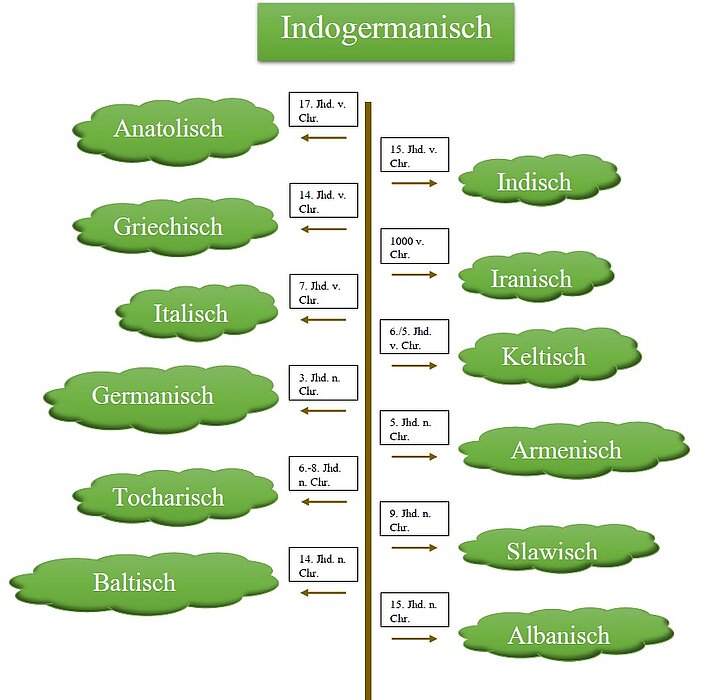Indo-European languages
The Indo-European language family
Comparative Indo-European linguistics, or Comparative Philology for short, studies the family of Indo-European languages. After a reliable methodology had been developed in the 19th century, scientific proof was provided that the most diverse languages in Europea and Asia can be traced back to a common ancestor language. Together they form the Indo-European language family. The numerous individual languages can be divided into eleven large language groups - apart from those that are attested only in fragments.
Today, about half of the world's population speaks an Indo-European language. The term itself was coined by Julius Klaproth in 1823. It is meant to bracket the Indo-European languages in their geographical distribution on the Eurasian continent: with Indian as the most southeastern and Germanic as the most northwestern Indo-European language group.
As a scientific discipline, Indo-European studies are concerned with drawing conclusions from the surviving daughter languages about the common ancestor language, Proto-Indo-European (PIE). Such conclusions are possible because linguistic change does not occur arbitrarily, but according to constant rules. This is why linguists can reconstruct the Proto-Indo-European language in its various aspects (phonetic system, grammar, vocabulary, syntax).











